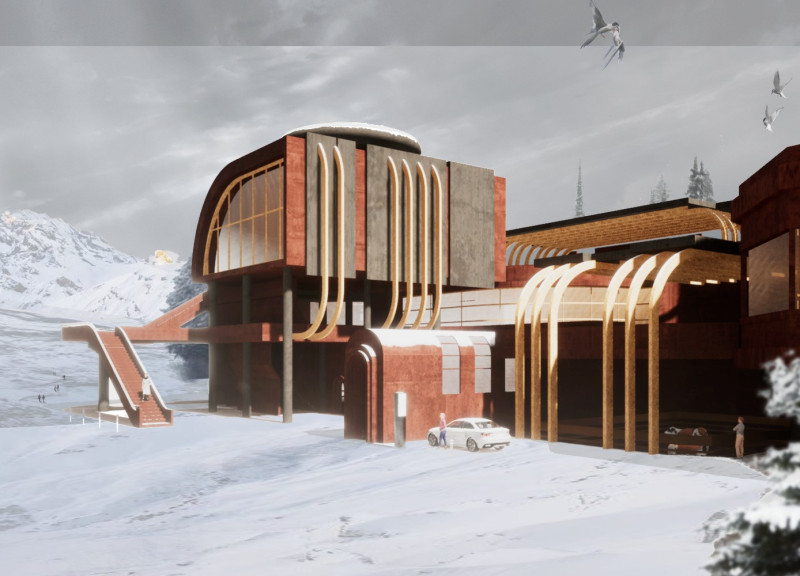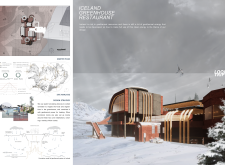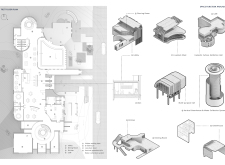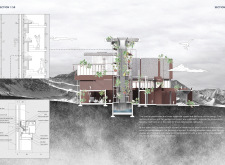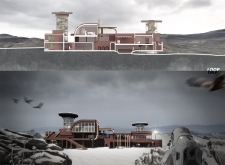5 key facts about this project
The core function of the Iceland Greenhouse Restaurant is to provide an immersive dining experience that emphasizes the importance of farm-to-table practices. The architecture encourages patrons to connect with their food sources while enjoying meals prepared from locally grown ingredients. This connection is visualized through the restaurant’s integrated greenhouse, which produces fresh herbs and vegetables that are directly used in the kitchen, creating a transparent relationship between food production and consumption.
One of the most notable aspects of this project is its architecture, which prioritizes environmental harmony while showcasing the beauty of the landscape. The design employs a modern aesthetic using a combination of concrete, wood, aluminum, and glass, allowing for ample natural light and open views of the surroundings. The extensive use of glass not only enhances the visual appeal but also promotes energy efficiency by maximizing daylight and reducing the need for artificial lighting. The structure’s simplicity in design, paired with rich textures and materials, reflects Icelandic culture and encourages warmth and comfort within the space.
The layout of the restaurant is well-considered, consisting of several distinct areas that serve specific purposes. Upon entering, visitors encounter a welcoming lobby that offers a glimpse into the vibrant dining space and the adjacent greenhouse. The dining area itself is designed with large windows, allowing diners to engage with the outdoor environment and experience changing seasons through the visual connection to the greenhouse.
Additionally, the project includes a multipurpose hall that can accommodate various activities, including workshops and cultural exhibitions, further engaging the community and visitors. This space is particularly significant as it can host educational programs focused on sustainable practices and local agricultural heritage, fostering a deeper understanding of the importance of these elements in everyday life. The vertical greenhouse system is a unique feature of the project, enabling year-round growth of vegetables and herbs while presenting an exceptional architectural element that stands out both functionally and aesthetically.
The innovative design approach also extends to the building's environmental systems. By harnessing geothermal energy for heating and implementing water collection systems for irrigation, the project achieves a remarkable level of sustainability that is crucial for its operational efficiency. This commitment to sustainability aligns with contemporary architectural ideas that emphasize responsible resource management and environmental stewardship.
In essence, the Iceland Greenhouse Restaurant serves as a model of integrated design that brings together architecture, community, and sustainability. Its unique approach to combining dining with agriculture presents a nuanced understanding of how architectural spaces can foster connections between people and their environments. Encouraging exploration of the project presentation will provide readers with deeper insights into the architectural plans, sections, designs, and ideas that shaped this noteworthy project. This investigation will further illuminate how the Iceland Greenhouse Restaurant stands as a testament to the potential of architecture to unify our dining habits with ecological consciousness and community involvement.


